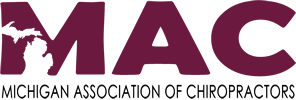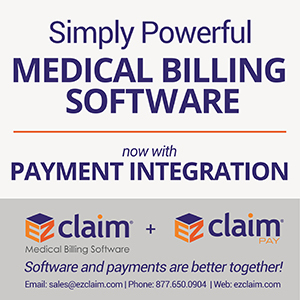Complete Story
07/09/2019
An Update from the MAC Veterans Task Force
Veterans Choice Program Officially Ended – and New Veterans Community Care Program Began – June 6
The U.S. Department of Veterans Affairs (VA) launched its new and improved Veterans Community Care Program on June 6, 2019, officially ending the Veterans Choice Program. It is hoped that this change will strengthen the nationwide VA Health Care System by empowering Veterans with more health care options.
“The changes not only improve our ability to provide the health care Veterans need, but also when and where they need it,” said VA Secretary Robert Wilkie. “It will also put Veterans at the center of their care and offer options… so they can find the balance in the system that is right for them.”
Under the new Veterans Community Care Program, Veterans can work with their VA health care provider or other VA staff to see if they are eligible to receive community care based on the following six eligibility criteria:
- Veteran needs a service not available at any VA facility. In this situation, a Veteran needs a specific type of care or service that VA does not provide in-house at any of its medical facilities.
- Veteran lives in a U.S. state or territory without a full-service VA medical facility. Applies only to Veterans in Alaska, Hawaii, New Hampshire, Guam, American Samoa, the Northern Mariana Islands, and the U.S. Virgin Islands.
- Veteran qualifies under the “grandfather provision” related to distance eligibility under the Veterans Choice program (see below).
- VA cannot furnish care within certain designated access standards (see below).
- The Veteran and the referring clinician agree it is in the best medical interest of the Veteran to receive community care based on defined factors. In this situation, a Veteran may be referred to a community provider when the Veteran and the referring clinician agree that it is in their best medical interest to see a community provider.
- VA has determined that a VA medical service line is not providing care in a manner that complies with VA’s standards for quality based on specific conditions. In this scenario, if VA has identified a medical service line is not meeting VA’s standards for quality based on specific conditions, Veterans can elect to receive care from a community provider with certain limitations.
Grandfather Provision
There are a few different ways that a Veteran could be eligible for community care under this criteria. Initially, the following two requirements must be met in every case:
- Veteran was eligible under the 40-mile criterion under the Veterans Choice Program on the day before the VA MISSION Act was enacted into law (June 6, 2018), and
- Veteran continues to reside in a location that would qualify them under that criterion.
If both have been met, a Veteran may be eligible if one of the following is also true:
- Veteran lives in one of the five States with the lowest population density from the 2010 Census: North Dakota, South Dakota, Montana, Alaska, and Wyoming, or,
- Veteran:
- Lives in another State,
- Received care between June 6, 2017, and June 6, 2018, and,
- Requires care before June 6, 2020
Designated Access Standards
To be eligible under this criterion, Veterans must meet specific access standards for average drive time or appointment wait-times.
Drive Time to a Specific VA Facility
- Thirty-minute average drive time (calculated using geomapping software) for primary care, mental health, and noninstitutional extended care services
- Sixty-minute average drive time (calculated using geomapping software) for specialty care
Appointment Wait Time at a Specific VA Facility:
- Twenty days from the date of request for primary care, mental health care, and noninstitutional extended care services, unless the Veteran agrees to a later date in consultation with his or her VA health care provider.
- Twenty-eight days for specialty care from the date of request, unless the Veteran agrees to a later date in consultation with his or her VA health care provider.
More Information
- For more information, see the VA Community Care Fact Sheets, available online here.
- Information specific to providers can be found here.
- Fact sheets designed specifically for providers can be accessed here.
Sources:
VA News Release, “VA launches new health care options under MISSION Act,” June 6, 2019
Reminder: Send Documentation to VAMC, Not TriWest
As of May 1, 2019, VA now requires documentation to the authorizing VA Medical Center (VAMC), rather than to TriWest. The authorizing VAMC (and the fax number to which documentation should be sent) is located on the first page of the authorization letter.
TriWest reminds providers to submit your initial visit and end-of-episode-of-care records to the VAMC. This ensures coordination of care for Veterans.
Grace Period Ended June 30th
The grace period (in which TriWest would forward documentation to the correct VAMC) ended June 30. However, beginning July 1, 2019, TriWest will shred any medical documents it receives in error, so be sure to update your procedures ASAP.
For more information, including the three exceptions to the rule, see the article entitled “REMINDER! Medical Documents Now Go to VA (not TriWest)” in the May 2019 edition of the TriWest Provider Pulse, available online here.
Timely Claims Filing Deadline – 120 Days from DOS
VA Community Care programs have timely filing limits for claims of 120 days from the date of service. Claims denied for timely filing cannot be billed back to the Veteran or VA.
TriWest suggests a 30-day timeframe from claims submission, so the sooner you submit your claims, the better!
For more information, see the article entitled “Timely Claims Filing Deadline Returning – 120-Day Limit” in the May 2019 edition of the TriWest Provider Pulse, available online here.
HealthShare Referral Manager: The VA’s New Software Solution Transforming the Way VA Community Care Providers Partner With the VA
To support community-based care for Veterans, VA has created HealthShare Referral Manager (HSRM), a new software solution that is transforming the way VA community care providers partner with VA to serve Veterans. The new system simplifies and streamlines the referral and authorization process and improves information exchange through one easy-to-use and secure work platform. According to TriWest, HSRM means less time faxing and emailing to VA, less time on hold with VA, and shorter turn-around time for clinical utilization and care coordination processes.
For more information, including information on how to get started with HSRM, see the article entitled “New VA Portal to Help Providers Care for Veterans” in the June 2019 edition of the TriWest Provider Pulse, available online here.


